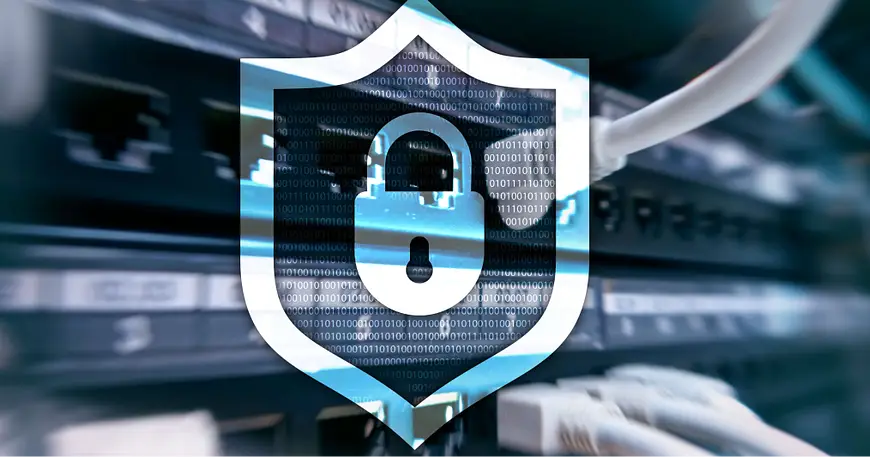The data shared between the communication nodes can range from financial details and medical information to classified, administrative data. These details might prove immensely valuable to many—especially cybercriminals for various purposes such as cyber warfare, identity thefts, ransomware attacks, DNS hijacking, and many other targeted cyber-attacks.
This is the primary reason cybersecurity has become one of the most talked-about aspects of the growing technological dependence of the world.
The growing potential of technology and information shared between various networks is what incites such an interest in the field of cybersecurity. Despite having cloud technology, data mapping and extensive help from digital forensics, endpoint security has still a lot of ground to catch up.
But many do not understand what cybersecurity is or its importance even at its basest of levels. This is where we are going to help you with a refresher course in the basics of cybersecurity.
So without any further ado, let’s start:
What is Cyber Security?
In a nutshell, cybersecurity is the activity or practice of protecting networks, computers, mobile devices, and other telecommunication networks from the attacks of malicious entities or programs designed to extract information for nefarious purposes.
Cybersecurity can, in the larger context of technology and communication, mean a lot of things. However, it is what protects communication devices and systems from external and internal attacks in the simplest of terms.
Based on the nature and the end goal of security, cybersecurity can be classified into the given below catalogues:
- Network Security: This is the process of protecting various networks from intruders’ attacks to protect the network and the data shared in the same.
- Application Security: This is concerned more with protecting applications and various devices from the attacks of malicious programs and hackers.
- Information Security: Here, data integrity is protected whether it is being transmitted or stored in the cloud or otherwise.
- Operational Security: This concerns overseeing various accesses and permissions given to people for accessing data and information stored.
- End-User Education: This involves the process of educating users against introducing a virus or other malicious programs into a system unknowingly.
Types of Cyber Security Threats
All significant types of cybersecurity threats can be categorized into three:
- Cybercrime
- Cyber-Attacks
- Cyber-terrorism
These are further classified due to the type of goal that it serves. Let’s take a look at some of the methods that most cybersecurity criminals use to their advantage.
Malware: A malware or malicious software is one of the most common types of cyber threats. This is a program created by a hacker or a cyber-criminal to get unauthorized access into any system—it could be a mobile device or a telecommunication device. Once the malware has been injected into a machine, the hacker can manipulate the device or threaten the user depending upon the type of malware.
These come in a variety of styles, and let’s take a look at them here:
- Viruses: This is a program designed to replicate itself. By the very design, viruses are programmed to infect clean files or data stored in computers and other devices and corrupt them.
- Trojans: As the name indicates, these are malware disguised as legitimate software programs coded by or for cybercriminals. Once the users install these Trojan malware into the computer thinking that these are legitimate software, it can damage or corrupt the entire system or function. It will function as per the commands of the developer and send information and data collected from the device without the user’s knowledge.
- Spyware: This is software designed to collect information or other details from the computer tracking the users’ activity on the computer, and send the same to a hacker. The sensitive data collected can be such details as names and passwords, credit and debit cards and banking information from users.
- Ransomware: These types of malware lock the uses’ devices and data. They also threaten the users to erase their personal files and information if their demand is not paid. It is because a ransom is involved, the malware goes by the name ransomware.
- Adware: Another type of malware that is spread by or as advertisement software programs. It may pop up advertisements on the screen of computers and other devices unsolicited, often irritating the users. They are also used to spread various types of malware into devices and communication systems, which hackers may use for a range of nefarious purposes.
- Botnets: These are another type of security threat formed by infected computers by hackers. They form botnets by creating a network of malware-infected computers to carry out tasks online without users’ knowledge.
SQL Injection
An SQL injection or Structured Query Language injection is a method for cyber-attack by cyber-criminals to either take control of a database or extract information from the same. If there are any vulnerabilities in a data-driven software program or an application, hackers infect the same with a unique SQL statement. This statement can then create a backdoor for the hackers to enter into the database and gain access to otherwise restricted and classified information.
Phishing
Phishing is a means of cyber-attack where users are contacted by email by hackers and cyber-criminals impersonating certain businesses or service providers. They use the tactic to divulge important information from users such as credit cards, debit cards, bank information, usernames, and passwords. Phishing attacks can also be targeted at a group of people or organization, and it is then called spear phishing.
Man-in-the-Middle Attack
This is another data-stealing method used by cyber-criminals where a hacker infiltrates into the communication between two users to intercept their message and steal valuable information. It could happen on an open, public network when a user purchases something online using a credit card. The hacker can steal the credit card information while communicating to the server via the network from the victim’s device.
Denial-of-Service
This happens typically with businesses and other organizational networks when a hacker overwhelms a network with false traffic and requests. This will cause the network to shut down and be prevented from carrying out the legitimate service demands made by the network users. Think about banks, ISPs, and government organizations.
In addition to all these, there are many other types of cybersecurity threats such as Dridex malware, emotet malware, and other specially designed campaigns to steal data and information and cause severe security breach for easier hacking.
Scope of Cyber Security Threats
As long as the world continues to depend on technology and data transfer, cyber threats cannot be truly over. It is estimated that in 2019 alone, the number of records that have been exposed by hackers is a whopping 7.9 billion.
This is also the major reason why most of the businesses in the world invest billions of dollars every year to protect their business, technology assets, and the data that they harbour. Some of the companies even have incident management teams to face such security challenges.
Various studies show that most of the victims of these attacks are public entities, retail businesses, and other small-scale businesses that do not have adequate, cutting-edge technologies to check malicious attacks and help them with disaster recovery.
While these are instances of a data breach in many large-scale businesses like Facebook, Twitter, and LinkedIn, the cases are far from very few.
This is because of the technologically advanced and more extensive security systems they have to protect their technology assets and infrastructure from malicious attacks.
What Can One Do to Protect Yourself from Cyber-Attacks?
While state-of-the-art technological systems and protocols are exceptionally effective against security threats, not all can afford it. However, there are simple ways and tips that individuals and businesses can use to safeguard themselves from the challenges of security threats.
- Always use legitimate software programs and paid options. Do not ever use pirated or cracked versions of software programs or applications.
- Ensure that all your software programs, applications, and Operating Systems are regularly updated for better security and patches.
- Use effective and trusted antivirus software. It is always vital to use comprehensive security software for holistic protection.
- Ensure that your usernames and passwords are strong, do not follow a pattern, and are not shared with anyone. Update the password consistently.
- Avoid downloading attachments from unknown messengers or senders. Do not even open such emails, tag them spam and delete them thoroughly.
- Do not visit unsecured websites or do not click on links given on emails sent from unknown senders.
- Do not use public Wi-Fi to connect to your business network or send essential data. Always use a secure network to access the internet.
- Exercise caution and always practice disciplined behaviour while using the internet, downloading software, opening and responding to emails.
Conclusion
These tips will help businesses and individuals become more conscious about their actions and build disciplined behaviour online and using technology. If you can afford, you can also use a cybersecurity consultant to help you carry out vulnerability assessments and other identity and access management.
If you are a business that deals with sensitive information or wants a bespoke cyber threat management system for your business, we can help you. We have got the right infrastructure, industry experience and insights, along with trained and highly proficient professionals who can help you.
We also offer various cybersecurity consultant plans where comprehensive identity and access management, Governance Risk and Compliance, and Managed Security Services along with remote IT support.
To get more information about our offerings, you can contact us right here.








